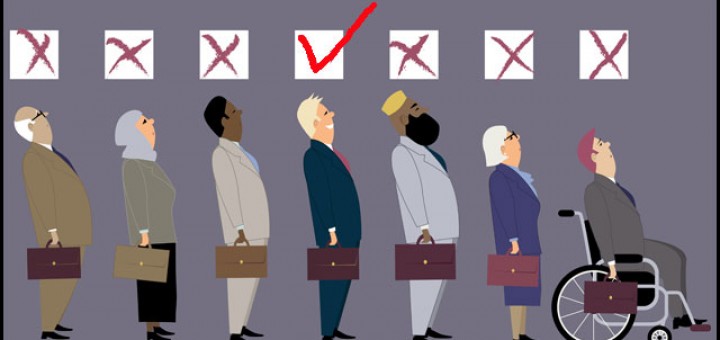BC Human Rights Tribunal v Schrenk: Employment Discrimination and Access to Justice

On December 15th 2017, the Supreme Court released its decision in British Columbia Human Rights Tribunal v Schrenk, 2017 SCC 62 [Schrenk], which deals with the question of whether discrimination “regarding employment” can ever be perpetrated by someone other than the complainant’s employer or superior in the workplace. The following post will discuss the case and offer insight into its importance. With strong majority, concurring, and dissenting opinions, this decision serves to highlight the difficulty inherent in exercises of statutory interpretation. However, despite the fact that all the opinions offer reasonable and persuasive reasons, I believe that the majority opinion is the most persuasive. The majority takes a broad interpretation of the words “regarding employment” and allows discrimination claims in any relationship where there is a “sufficient nexus to the employment context” (Schrenk, para 38). In doing so, it produces a situation in which complainants can seek direct relief from human rights tribunals where they have experienced workplace discrimination. From an access to justice perspective, this opportunity for direct relief is important. Further, it is preferable to the situation espoused by the dissenting justices in which complainants would be forced to bring a claim against their employer for failure to provide a discrimination-free workplace. In my mind, this indirect form of relief, while logical on paper, overlooks the practical difficulties inherent in handling discrimination claims (i.e. social pressure, shame, etc.) and thus is less attractive than a model where relief can be sought directly against the perpetrator through a tribunal.
The Facts & Judicial History
Mr. Sheikhzadeh-Mashgoul, an Iranian immigrant and Muslim, was a civil engineer working for an engineering firm to supervise a road improvement project in British Columbia in August 2013. In his role, he was given certain supervisory powers over the construction contractor who was hired to carry out the project. Mr. Schrenk worked for the construction company as a site foreman and superintendent. Over the course of the first few months of the project, there were a number of incidents involving the two men in which Mr. Schrenk acted abusively toward Mr. Sheikhzadeh-Mashgoul: Mr. Schrenk asked, “You are not going to blow us up with a suicide bomb, are you?”; he shoved Mr. Sheikhzadeh-Mashgoul and called him a “fucking Muslim piece of shit”; he yelled at Mr. Sheikhzadeh-Mashgoul to “[g]o back to your mosque where you came from.” As a result, Mr. Schrenk was removed from the work site. However, he continued to harass Mr. Sheikhzadeh-Mashgoul, sending him unsolicited emails “in which he made derogatory insinuations about his sexual orientation.” Mr. Schrenk’s employment was then terminated (Schrenk, paras 4-13).
In April 2014, Mr. Sheikhzadeh-Mashgoul filed a complaint before the British Columbia Human Rights Tribunal against Mr. Schrenk, alleging discrimination on the basis of religion, place of origin, and sexual orientation, all of which are prohibited grounds pursuant to section 13(1) of the British Columbia Human Rights Code, RSBC 1996 [the Code]. Mr. Schrenk applied to dismiss the complaint pursuant to section 27(1)(a) on the grounds that the Tribunal did not have jurisdiction over the complaint as Mr. Sheikhzadeh-Mashgoul was not in an employment relationship with Mr. Schrenk.
The Tribunal rejected Mr. Schrenk’s claim and held that Mr. Schrenk was liable under section 13—he had discriminated against Mr. Sheikhzadeh-Mashgoul and protection under section 13 is “not limited to discrimination by an employer” (Schrenk, para 17).
Mr. Schrenk sought judicial review of the decision. The Supreme Court of British Columbia dismissed the appeal, holding that the Tribunal had not erred in its interpretation and application of the Code (Schrenk, paras 19-20).
At the British Columbia Court of Appeal, however, Justice Wilcock overturned the trial court’s decision, holding that the Tribunal had erred in taking jurisdiction because, per section 13, “discrimination ‘regarding employment’ requires the improper exercise of economic power in the traditional ‘master-servant’ relationship” (Schrenk, para 24 [emphasis in original]). As such, in this case, the Tribunal did not have jurisdiction because Mr. Schrenk was not in a position of power over Mr. Sheikhzadeh-Mashgoul and thus “not in a position to force [him] to endure th[e] conduct as a condition of his employment” (Schrenk, para 25).
Opinions from the SCC: Interpreting the Term “Regarding Employment”
At the outset of his analysis, Justice Rowe, states that “this appeal calls for an exercise in statutory interpretation” (Schrenk, para 29). More specifically, it called for an interpretation of the words “regarding employment” in section 13(1)(b) of the Code.
Writing for the majority, Justice Rowe adopted a broad interpretation and, agreeing with the Tribunal, held that the term “does not solely prohibit discrimination within hierarchical workplace relationships” (Schrenk, para 38). Rather, he argued that the scope of “regarding employment” is such that “it prohibits discriminatory conduct that targets employees so long as that conduct has a sufficient nexus to the employment context” (Schrenk, para 38 [emphasis in original]). As such, for Justice Rowe, section 13(1)(b) is not concerned with restricting “who can perpetrate discrimination” but rather “who can suffer employment discrimination” (Schrenk, para 38 [emphasis in original]).
By contrast, former Chief Justice McLachlin, writing in dissent, took a narrower approach and argued that the phrase “regarding employment” refers to discrimination “arising out of a relationship of master and servant, master and apprentice and principal and agent, if a substantial part of the agent’s services relate to the affairs of one principal” (Schrenk, para 109). According to the former Chief Justice, this more narrow interpretation is preferable as it recognizes that such relationships involve “control or power over the employee, apprentice or agent”—if the provincial Legislature had wanted a broader scope, they would have used a broader term, such as “workplace,” rather than “employment” (Schrenk, 109). As such, for Chief Justice McLachlin, discrimination regarding employment “requires the wrongdoer against whom the claim is made to have power or authority over the complainant” (Schrenk, para 100).
However, this narrow approach is rejected by Justice Rowe for two reasons. First, he argues that, while “employment” connotes a relationship between an employer and an employee, “it would be unduly formalistic to assume that the only relationship that can impact our employment is that which we share with our employer” (Schrenk, para 40). Other relationships, such as those with one’s colleagues, can have a significant impact on one’s employment experience. Second, Justice Rowe argues that the former Chief Justice’s view of power in the workplace—that only the employer is in an economic position of power over the employee—is limiting as it fails to consider that economic power can be exercised by non-employers (i.e. a patron at a restaurant has power over their server by way of tips) (Schrenk, para 42). Further, the approach fails to recognize that “economics is only one axis along which power is exercised between individuals”—men exercise gendered power over women, white people exercise racialized power over people of colour (Schrenk, para 43). And, as the Code is interested in preventing any and all abuses of power, including the abuse of both economic and identity power, it is preferable to interpret the term broadly. Ultimately, then, for Justice Rowe, while “discrimination by one’s employer is particularly insidious for the reasons identified by the Court of Appeal—in that it exploits an economic power imbalance—other forms of conduct can amount to discrimination “regarding employment” in the absence of such economic power” (Schrenk, para 53).
In her concurring opinion, Justice Abella shifts the focus away from the specific term “regarding employment” and holds that the case requires a consideration of “the meaning of employment discrimination in a way that is consistent with, and emerges from, our well-settled human rights principles, and not just the particular words of British Columbia’s Code” (Schrenk, para 73). In other words, Justice Abella’s approach to dealing with the question of whether employment discrimination can be perpetrated by people other than one’s employer or superior, is to take a step back, as it were, and consider the issue in a more holistic and principled manner—what matters is not the specific wording of the legislation at issue, but what human rights principles would dictate based on the context.
Thus, for Justice Abella, the “key is whether the harassment has a detrimental effect on the complainant’s work environment”—and this can occur in “the absence of economic power imbalance” (Schrenk, paras 89-90). As the aim of human rights legislation is the protection of individuals and the fostering of substantive equality, an approach that “depend[s] on technical lines of authority … may end up defeating the[se] goals” (Schrenk, para 90).
Why Does this Decision Matter?: Impacts for Access to Justice
In reflecting on the decision and its importance, it is crucial to note that none of the decisions in any way suggest that Mr. Schrenk’s behaviour did not amount to discrimination or that Mr. Sheikhzadeh-Mashgoul should not be entitled to a remedy. In a very important sense, then, the majority, concurring, and dissenting opinions are more alike than they are different—they are all in favour of ensuring protection for employees from abuse.
They differ, however, in the way in which they believe that such protection should come about. For instance, in the view of former Chief Justice McLachlin, a complainant’s “remedy is not to confront her co-worker, but to go to the employer or person responsible for providing a discrimination-free workplace” and request that they act to stop the abuse. If the employer fails to do so, “the employee can bring a claim against the employer” and “the Tribunal may … giv[e] the employee access to the full range of remedies provided by the Code” (Schrenk, para 125). As such, on McLachlin’s approach, while a complainant does not have grounds under section 13(1)(b) to bring a claim directly against the perpetrator, they are able to seek relief through their employer.
By contrast, Justice Rowe’s (and Justice Abella’s) broader approach—which gives the Tribunal jurisdiction to deal with a claim against an individual other than an employer (i.e. Mr. Schrenk)— allows for direct relief for the complainant against their abuser. For Justice Rowe, this situation is preferable as, while an employer is “primarily responsible for ensuring a discrimination-free workplace,” it is limiting to the survivors of discrimination to be forced to seek a remedy only from their employer (Schrenk, para 56 [emphasis in original]).
I agree. Although I believe that the dissenting view is rational and would likely be effective in ensuring protection for employees, it offers a less robust means of protection than does Justice Rowe’s approach. If we are interested in protecting employees, it would seem odd to adopt a strategy that limits the options available to the complainant to remedy harm. Raising the spectre of abuse in one’s workplace is not an easy thing to do and there are numerous social and cultural barriers that can prevent individuals from approaching their employers. As such, and in light of the ever-expanding recognition of the prevalence of abuses in the work environment (see e.g. Stephanie Zacharek, Eliana Dockterman & Haley Sweetland Edwards, “Time Person of the Year: The Silence Breakers” Time Magazine (2017); “Hollywood sexual harassment scandal,” BBC; “Time’s Up Now”), it is crucial that our legal system is structured in a way that can enable relief in a manner that is conscientious of the practical burdens associated with raising discrimination and abuse in the workplace. A choice to adopt a narrow approach would risk leaving the survivors of discrimination in a more difficult situation in regards to remedies.






Join the conversation